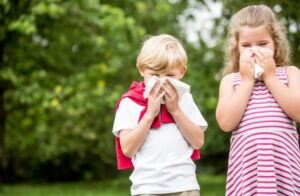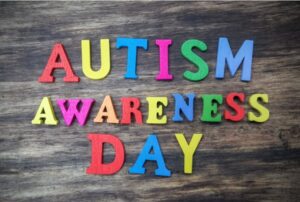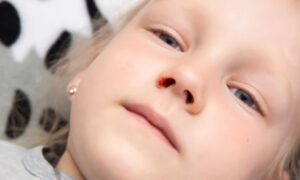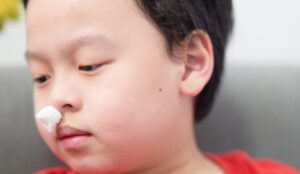Pityriasis alba is a common skin condition, especially in children and adolescents, characterized by pale, round, or irregular patches of skin, often with mild scaling and dryness. Although not serious, its appearance can be concerning for parents. Understanding its causes and the best treatment options can help speed up recovery.
Causes of Pityriasis Alba
The exact cause of pityriasis alba remains unclear, but several factors are believed to contribute:
- Dry skin: Children with dry skin are more prone to develop this condition, especially during colder months or in dry climates.
- Post-inflammatory hypopigmentation: After skin inflammation, some areas may lose pigment, leading to pale patches.
- Sun exposure: Excessive sun exposure can make the patches more noticeable since the affected areas do not tan as the surrounding skin does.
- Compromised skin barrier: Overuse of skincare products with harsh chemicals may damage the skin's protective barrier, leading to dryness and irritation.
Steps for Fast Recovery
Although pityriasis alba usually resolves on its own over months or years, the following steps can speed up recovery:
1. Moisturizing
Moisturizing is crucial. Using emollient-rich creams can help restore the damaged skin barrier and reduce dryness and scaling. Apply moisturizer 2-3 times daily, especially after washing the face or bathing. Some recommended ingredients include:
- Glycerin: A powerful humectant that forms a protective layer on the skin to prevent moisture loss.
- Ceramides: Help repair and strengthen the skin barrier, improving dryness.
- Shea butter: A natural emollient that softens the skin and locks in moisture.
2. Gentle Cleansing
Avoid harsh soaps or cleansers that contain irritating chemicals. Opt for gentle, fragrance-free cleansers. Overly aggressive cleansers can further damage the skin barrier, making the skin drier. Additionally, washing with lukewarm water instead of hot water can help preserve the skin’s natural oils.
3. Sun Protection
While moderate sun exposure is beneficial, excessive exposure can worsen the appearance of the patches. The areas affected by pityriasis alba are more prone to sunburn due to their reduced pigment. Therefore, use broad-spectrum sunscreen with SPF 30 or higher and wear protective clothing when outdoors. Too much sun can aggravate the condition, making sun protection essential.
4. Topical Steroid Creams
For stubborn or inflamed cases of pityriasis alba, low-dose steroid creams may be prescribed by a healthcare provider. These creams can help reduce inflammation and promote skin healing. However, it's important not to use these creams for an extended period or in excessive amounts to avoid side effects.
5. Vitamin D Supplements
Some studies suggest a link between vitamin D deficiency and pityriasis alba. Supplementing with vitamin D may help alleviate symptoms in some cases. A doctor may recommend oral vitamin D supplements or topical creams containing vitamin D, depending on the individual’s condition.
Dietary and Lifestyle Support
Diet also plays an important role in skin health. Foods rich in antioxidants, Omega-3 fatty acids, and vitamins may aid in skin repair and regeneration. Some beneficial foods include:
- Vitamin E-rich foods: Such as nuts and spinach, to nourish the skin and enhance the skin barrier function.
- Omega-3 fatty acids: Found in fish, flaxseed oil, and walnuts, they reduce inflammation and improve skin dryness.
- Staying hydrated: Drinking enough water helps improve skin hydration and promotes faster recovery.
Conclusion
Though the recovery process for pityriasis alba may take time, proper care and treatment can significantly improve symptoms. Moisturizing, gentle cleansing, and sun protection are key steps. In more severe cases, steroid creams or vitamin D supplements may speed up recovery. Additionally, a healthy diet and adequate water intake support overall skin health.
References
- WebMD: Pityriasis Alba Overview
- Mayo Clinic: Pityriasis Alba Treatment and Prevention
- American Academy of Dermatology (AAD): Childhood Skin Conditions
- National Eczema Association: Managing Dry Skin in Children













